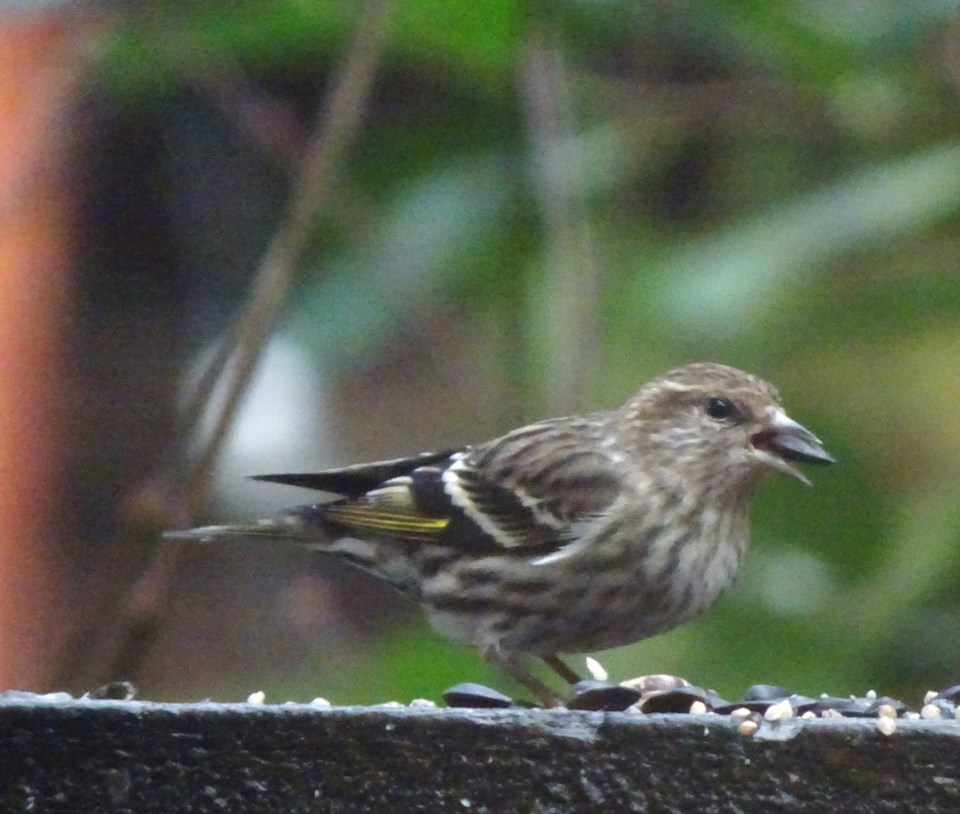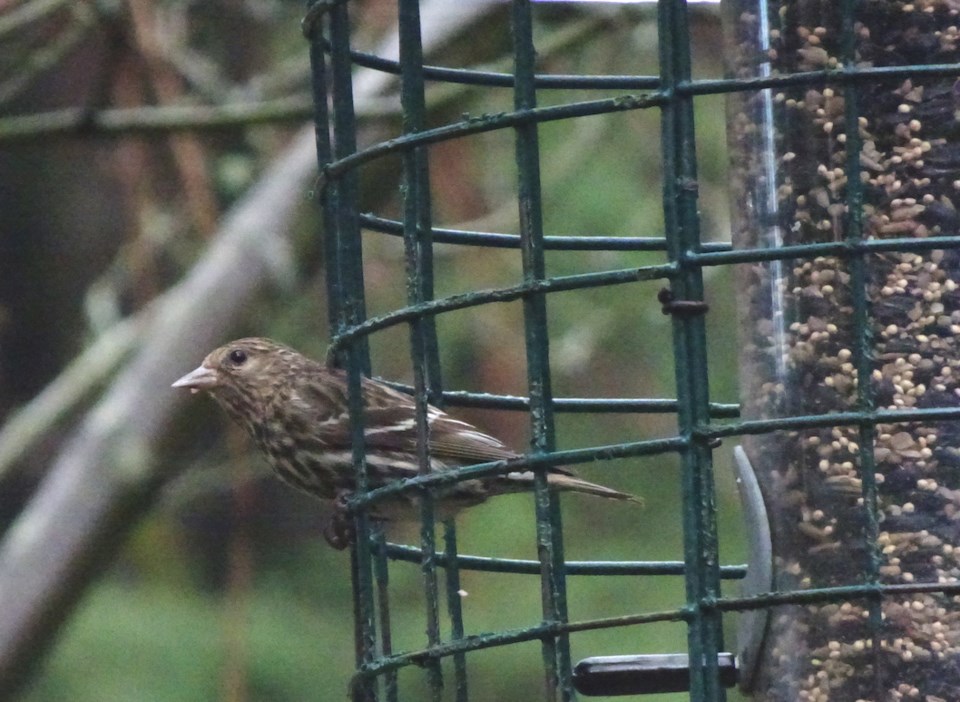I’ve been having fun exploring my neighbourhood with the “Play Outside with Bowen Nature Club” outdoor activity series that has been running this fall. Have you been playing along? For week nine the activity was an alphabet scavenger hunt. So, in that spirit, I’d like to submit:
A is for “A LOT.” B is for Birds. C is for Clustering. D is for Diving. E is for Everywhere!
Have you seen them? Of course you have! Did you know what they were? Maybe not!
Bowen has been abuzz about the huge Flocks of little birds inundating the island this last month. Undulating Gracefully like schools of Herring, they swirled around houses and above roadways, through trees, and unfortunately also into a few windows. Islanders were Jarred at the birds getting Knocked out (or sadly even Killed), and intensely curious about the abundance of these Lively little creatures.
What are these Mysterious little birds? And why are they appearing in such large numbers? Is this one of the final squares on our bizarre 2020 bingo card?
(Photo: Wendy Seale-Bakes)
N is for Never fear: O is not for Omen, P is not for Plague-- it is a very natural phenomenon.
P is for Pine Siskins. Adorable little finches, their yellow accented wings and tails are much brighter than goldfinches. They have notched tails like sparrows, but at five inches (12 to 13cm) are smaller.
Pine Siskins are common throughout Canada all year; however, they do migrate farther north to breed, and farther south in the winter. The most surprising (Quirky?) aspect to their migration is that it is rather erratic. Some years, you will see a huge boom of birds, and other years, you will see scarcely any.
Crop failures and other changes in their usual food supply can be what causes them to change Ranges and move into new areas. Bowen’s plentiful alder trees are likely an attractant to this hungry bird. They use their small pointed beaks to pry the Seeds out of alder cones. Of course, they also eat other cones and seeds, like the eponymous pine.
You might catch them at your feeder, if you put out Thistle seeds or sunflower seeds. Unfortunately, Pine Siskins tend to carry salmonella, and can infect each other and other birds at feeders, so it’s probably best to let them forage on their own.
We hope you’ve been enjoying the “Virtual” club activities we’ve been posting this fall. While the club is taking a break from posting structured outdoor activities this Winter, it is our dream that you will continue to “forage on your own,” through December and beyond. Of course, you can always go back and do this fall’s activities any time you like! In addition, feel free to join in the Annual Audubon Xmas (Christmas) Bird Count, which runs from Dec. 14 to Jan. 5. Keep an eye out for the flash of Yellow on the Pine Siskin, as it Zips along in a neighbourhood near you.
Resources: facebook.com/bowennatureclub; audubon.org/conservation/join-christmas-bird-count




